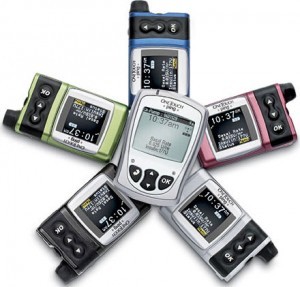 Diabetics may need to pay careful attention to their insulin pumps while taking flights. A research team has reported that changes in cabin pressure could alter the functioning of insulin pumps, causing them to deliver too much or too little insulin. The effect can be a dangerous one for sensitive diabetics.
Diabetics may need to pay careful attention to their insulin pumps while taking flights. A research team has reported that changes in cabin pressure could alter the functioning of insulin pumps, causing them to deliver too much or too little insulin. The effect can be a dangerous one for sensitive diabetics.
The research team recommended that diabetics disconnect their insulin pumps before their flights take off and then again once the flight lands as well as checking to make sure that there are no oxygen bubbles in the insulin before reconnecting the pump.
However, Dr. Robert Cohen, an endocrinologist with the University of Cincinnati College of Medicine, says that it may only affect a small number of diabetics.
“It’s certainly not a frequent and recurring problem that I hear about from patients who fly,” said Dr. Cohen. He was not part of the research team that conducted the study.
“The people who are very sensitive to small changes in doses are the ones who are going to be most sensitive to this,” said Dr. Cohen. “People who are on large doses or are not very sensitive… are far less likely to be affected by this.”
The research was touched off when Bruce King of John Hunter Children’s Hospital in Newcastle, Australia and his colleagues heard of a 10-year-old girl with Type 1 diabetes whose blood sugar levels dipped too low a full hour after her flight’s take-off. The team investigated and found other reports of diabetics whose pumps had delivered incorrect amounts of insulin during flights.
King’s team tested the idea by placing 10 insulin pumps on a commercial flight. Upon analyzing the activity of the pumps, the team found that the pumps delivered 1 to 1.4 extra units of insulin during take-off, when the cabin was depressurizing.
When the air pressure increased as the plane descended for landing, a small amount of insulin was sucked back into the pumps — less than 1 unit.
For reference, the average adult with Type 1 diabetes needs about 50 units of insulin throughout the day.
Though the changes in dosage were small, King warned that the changes might be dangerous to children and people whose insulin levels remain relatively stable throughout the day. “Any person using an insulin pump should be aware that big pressure changes can cause this effect,” said King.
The pumps used in the study were manufactured by Animas and Medtronic. “Many factors affect blood glucose during travel and the effect of small dose variations over the course of a plane flight is unlikely to be clinically significant. However, we are both continuing to further explore this subject,” the companies said in a joint statement to Reuters Health.
They recommended that diabetics who use their insulin pumps “consult your healthcare team before taking a trip, always be prepared with extra supplies and sources of glucose, and test your blood sugar frequently.”
King’s research team said in Diabetes Care that rare flight conditions could cause much faster decreases in cabin pressure, resulting in diabetics receiving far too much insulin from their pumps.
To prevent such dangerous swings in insulin levels, King’s team suggested that diabetics should disconnect pumps before takeoff and remove any air bubbles, then reconnect the pumps. Additionally, they should prime the pump with two units of insulin after landing and before reconnecting it. Insulin pumps should also be disconnected during flight emergencies which may result in wild variations in cabin pressure.